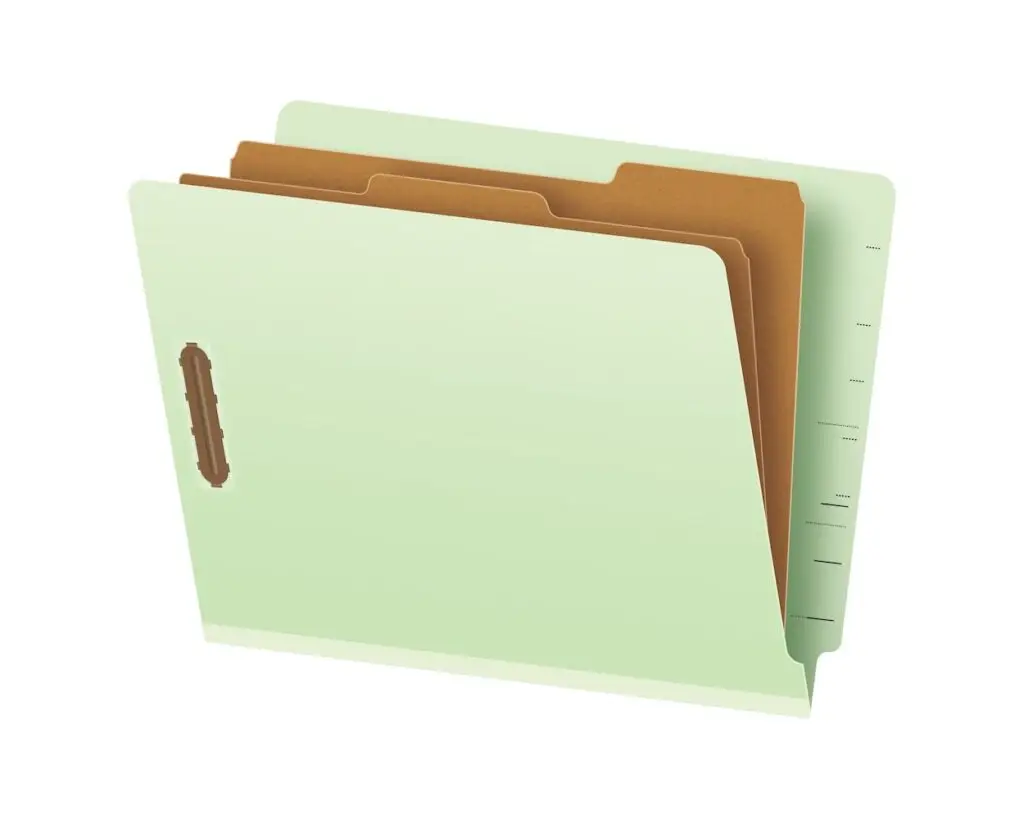“Organization doesn’t happen by accident — it happens by design.”
In the world of property management, every piece of paper, every digital file, tells a part of a story. There’s the application that marked the hopeful beginning of a tenancy, the lease that meticulously defined its terms, the notice that enforced a crucial boundary, and the final inspection report that closed the chapter. Multiplied across hundreds of tenants, dozens of properties, and countless transactions over the years, these individual stories combine to form a vast, complex narrative. Without a coherent structure, this narrative quickly devolves into a chaotic archive, a digital and physical labyrinth where even the most diligent teams spend more time chasing files than they do managing assets.

This is a scenario familiar to nearly every property manager. It’s the frantic search for a signed pet addendum when a dispute arises. It’s the uncertainty of whether the latest lease renewal was saved to the shared drive, a local desktop, or only exists as an email attachment. It’s the time-consuming ordeal of onboarding a new team member who has to learn a convoluted, unwritten system of file organization that changes depending on who last touched the document. This is the quiet chaos that erodes efficiency, introduces risk, and adds unnecessary stress to an already demanding profession.
The 6-Tab Ecosystem was born from this chaos. It was designed to prevent it. It is a complete, yet deceptively simple, system for instilling discipline into your document management processes. It’s an intuitive framework that keeps every tenant record organized, accessible, and understandable, regardless of whether you’re sitting in the office, standing in a courtroom, or reviewing a file on a tablet during an on-site visit. The power of this ecosystem is that it doesn’t rely on a single, proprietary app or an expensive software platform. Its foundation is built on something far more enduring: consistent habits, a clear and logical structure, and a shared language for organization that everyone on the team can understand and execute.
1. The Foundation: The 6-Tab Folder System
At the very heart of this ecosystem lies the 6-Tab Folder System. It is a simple, logical, and endlessly repeatable structure designed to organize every piece of documentation related to a tenancy. This structure is composed of six distinct categories, each representing a critical phase or function in the lifecycle of a resident.
Application
Lease & Addenda
Notices & Compliance
Correspondence
Financials & Payments
Move-In / Move-Out & Maintenance

Think of these six tabs as the chapters in the story of a tenancy. Each one holds a specific and predictable part of the narrative, flowing in a logical sequence from the beginning to the end.
Chapter 1: Application. This is where the story begins. This folder holds the initial application form, screening reports, background and credit checks, income verification, and any other documents that established the applicant’s qualifications. It is the foundation upon which the entire tenancy is built, capturing the due diligence performed before a key was ever handed over.
Chapter 2: Lease & Addenda. This is the constitution of the tenancy, the rulebook that governs the relationship between landlord and tenant. This folder contains the most critical legal documents: the signed lease agreement itself, along with any and all addenda—pet addenda, parking agreements, smoke-free policies, lead paint disclosures, and mold disclosures. It also houses lease renewals, which document the continuation of the story. When a question of rights or responsibilities arises, this is the first place you look.
Chapter 3: Notices & Compliance. This folder is the official record of enforcement and formal communication. It contains copies of any legal notices served to the tenant, such as 3-day notices to pay or quit, 10-day notices to comply, notices of lease violations, or official notices to enter the premises. This is arguably the most critical folder from a legal standpoint. In the event of an eviction or dispute, the contents of this folder provide the irrefutable, time-stamped evidence that proper procedures were followed. It is your shield in a legal battle.
Chapter 4: Correspondence. While the “Notices” folder contains the formal, legally-binding communications, this folder captures the rest of the conversation. It holds saved emails, summaries of phone calls, and copies of letters sent or received. It provides the context and color to the formal record, documenting requests, complaints, and resolutions. It can be invaluable for understanding the history of the relationship and heading off potential “he said, she said” arguments.
Chapter 5: Financials & Payments. This is the financial ledger of the tenancy. While your primary accounting software is the master record, this folder holds supporting documentation. It can include copies of receipts for non-standard payments, resident ledgers, security deposit accounting forms, and any documentation related to payment plans or disputes. It tells the complete financial story, from the first rent check to the final security deposit disposition.
Chapter 6: Move-In / Move-Out & Maintenance. This folder documents the physical life of the property during the tenancy. It starts with the signed move-in inspection form, complete with photos or videos. It then accumulates a record of all maintenance requests and work orders. Finally, it concludes with the move-out inspection report, photos, and any documents related to charges for damages. This folder is the primary defense against security deposit disputes, providing a clear before-and-after picture of the unit’s condition.
The beauty of this structure is its universality. It works just as well for physical manila folders with plastic tabs in a filing cabinet as it does for digital folders on a shared drive or within specialized property management software.
Purpose: To give every single document a logical, predetermined home and to provide every staff member with an intuitive map to find it.
Result: Drastically faster file access, cleaner and less stressful audits, simpler and more effective employee onboarding, and a significant reduction in costly mistakes born from disorganization.
When every member of your team knows exactly where to file a document and precisely where to look for it, ambiguity evaporates. Communication becomes clearer, processes become smoother, and accountability becomes an automatic byproduct of a well-designed system.
2. Consistency Through Naming: The Universal Language
If the 6-Tab folder structure is the library, then the naming convention is the universal cataloging system that makes every book findable. The ecosystem relies on one simple, unshakeable truth: a file’s name is its identity. An ambiguously named file, like Scan_001.pdf or Lease_Final_Signed_2.pdf, is a piece of digital driftwood, unmoored and easily lost in the vast ocean of data.
Whether you use an automated tool like Blaze Rename or implement a manual system of discipline, the key is absolute consistency. Every file created or processed must be given a name that clearly and concisely states what it is, who it belongs to, and when it was created. A reliable naming convention is the engine that makes your entire document ecosystem searchable, filterable, and ready for automation. It transforms a chaotic collection of files into a structured, queryable database.
An Example of a Robust Naming Format
A simple yet powerful format can be structured as follows:
PropertyUnit_DocType_Context_MMDDYYYY.ext
Let’s break down why this structure is so effective:
PropertyUnit: This is the primary identifier, placing the document in the context of a specific physical asset. For multi-unit properties, this would be an abbreviation for the property and the unit number (e.g.,CP-222for Cedar Pointe, Unit 222). For single-family homes, it could be the street number and name (e.g.,123MainSt). Placing this first ensures that when files are sorted alphabetically, all documents for a given unit are grouped together.DocType: This directly corresponds to the 6-Tab system. It identifies the document as anApplication,Lease,Notice,Correspondence,Financial, orInspection. This element acts as a powerful keyword for searching and filtering.Context: This provides a crucial layer of specific detail. Is it aLease_Renewalor theLease_Original? Is it aNotice_NoiseViolationor aNotice_LateRent? Is the correspondence withJohnDoeor about aPlumbingRepair? This context eliminates the need to open the file to understand its specific purpose.MMDDYYYY: The date stamp is non-negotiable. It establishes a clear chronology for every document. This is invaluable when reconstructing a timeline of events for legal purposes or internal audits. A consistent date format ensures proper sorting by time.
Example in practice:
A lease renewal for unit 222 at Cedar Pointe, signed on October 1, 2025, would be named:
CP-222_Lease_Renewal_10012025.pdf
A noise violation notice for the same unit issued on December 5, 2025, would be:
CP-222_Notice_NoiseViolation_12052025.pdf
This meticulous structure ensures that files remain organized and intelligible even when they are pulled out of their designated folders. When you attach one of these files to an email, download it to your desktop, or sync it across different cloud services, its identity remains intact. Its name tells its story.
Good naming creates reliability. A consistent pattern means that anyone on your team, from a seasoned portfolio manager to a brand-new assistant, can find the right document quickly and confidently, even without knowing its exact storage location. They can simply search for CP-222_Lease and instantly see every lease-related document for that unit, sorted chronologically. This is the power of a shared language.
3. The Digital Mirror: Aligning with PM Software
A well-designed system must bridge the gap between your internal processes and the software tools you use every day. The 6-Tab system extends naturally into property management platforms like AppFolio, creating a seamless “digital mirror” of your organizational philosophy. When used properly, each tenant record within AppFolio can and should reflect the same six core categories, ensuring your primary software platform speaks the same language as your internal filing cabinet.
The goal is to eliminate disconnects. The way you think about a tenant file in your office should be identical to the way you interact with it on the screen. Here’s how the 6-Tab system maps directly to AppFolio’s typical folder structure:
| 6-Tab Label | AppFolio Folder |
| 1. Application | Application |
| 2. Lease & Addenda | Lease |
| 3. Notices & Compliance | Notices |
| 4. Correspondence | Correspondence |
| 5. Financials & Payments | Correspondence or Financials (if available) |
| 6. Move-In / Move-Out & Maintenance | Misc or custom Inspections/Maintenance |
This one-to-one mapping is the critical link that makes the entire ecosystem function. When a team member scans a notice, they don’t have to stop and think, “Now, where does this go in AppFolio?” The answer is baked into the system. The document, already named CP-222_Notice_LateRent_11052025.pdf, is logically uploaded to the Notices folder within the tenant’s page in AppFolio. There is no guesswork, no room for creative interpretation.
This consistency bridges your internal and external systems, allowing documents to flow naturally from a physical scanner to permanent cloud storage without confusion or friction. It creates a unified, authoritative source of truth. Whether an employee is looking at a physical binder, a folder on a shared network drive, or the tenant’s page in AppFolio, they see the same organizational logic. This dramatically reduces training time for new hires and minimizes the risk of misfiled documents, which can have serious legal and operational consequences. The digital mirror ensures that your commitment to organization is reflected in the tools you rely on most.
4. The Purpose Behind the System: A Cure for Corporate Amnesia
The 6-Tab Ecosystem wasn’t conceived in a vacuum. It was forged in the trenches of day-to-day property management to solve three pervasive and costly problems that plague teams of all sizes:
Inconsistency: This is the silent killer of efficiency. One property manager files leases under the tenant’s name, another by unit number. One assistant saves all correspondence into a single, massive “Emails” folder, while another meticulously creates subfolders for every month. This lack of a shared standard means that finding a document becomes an exercise in archaeology, dependent on knowing the quirks of the person who last saved it.
Duplication: Inconsistent naming and filing inevitably lead to duplicate files. A lease might be saved as
Lease.pdf,Lease_Signed.pdf, andCP-222_Lease_Final.pdf, all residing in slightly different locations. This creates confusion about which version is the true, authoritative one. It clutters servers, bloats backups, and introduces a real risk of acting on outdated information.Inefficiency: The cumulative effect of inconsistency and duplication is a massive drain on your team’s most valuable resource: time. Every minute spent searching for a document that “should be here somewhere” is a minute not spent leasing a unit, resolving a tenant issue, or communicating with an owner. This wasted time, multiplied across a team over a year, represents a significant hidden operational cost.
By introducing a shared, mandatory structure, the 6-Tab system eliminates the ambiguity that causes these problems. It replaces personal preference with professional process. Everyone files documents the same way, in the same designated place, using the same clear and descriptive naming conventions.
This systemic approach has profound benefits that extend beyond daily convenience. When employee turnover happens—a constant reality in the industry—the system endures. A new manager can step in and immediately understand the history of every tenant and every property because the organizational logic is self-evident. When portfolios are bought or sold, the clean, consistent documentation makes due diligence smoother and transitions far less painful.
This level of predictability isn’t just a nice-to-have; it’s a prerequisite for compliance. Property management is a field governed by precise recordkeeping requirements. Courts, auditors, fair housing agencies, and property owners all expect and demand organized, accessible documentation. The 6-Tab approach is designed to meet that expectation every single time, providing a reliable and defensible record of every action taken.
5. The Ecosystem in Action: A Simple, Repeatable Workflow
The true power of the 6-Tab Ecosystem is realized when it becomes an ingrained part of your team’s daily muscle memory. It functions as a simple, consistent, and adaptable workflow loop:
Scan → Name → File → Upload → Reference
Let’s walk through this loop with a practical example. A resident in unit MH-101 (Maple Hills, Unit 101) submits a signed lease renewal.
Scan: The front desk assistant receives the physical document and immediately scans it, creating a high-quality PDF. The paper copy can now be filed or securely shredded, depending on company policy. The digital file is the new source of truth.
Name: Instead of saving it with the scanner’s default name, the assistant renames it according to the system:
MH-101_Lease_Renewal_10252025.pdf. This single action gives the document its permanent, searchable identity.File: The newly named file is moved from the “scans” folder to the central shared drive, navigating to the
Maple Hills > Unit 101 > 2. Lease & Addendafolder. Its home is now established.Upload: The assistant then opens AppFolio, navigates to the tenant page for Unit 101, and uploads the same file into the
Leasefolder. The digital mirror is now updated.Reference: Nine months later, the owner asks to confirm the new rental rate for that unit. The property manager, who is working from home, simply searches the shared drive or AppFolio for
MH-101_Leaseand the renewal document appears instantly. No frantic calls to the office, no digging through messy folders. Just a quick, confident answer.
This workflow is technology-agnostic. It doesn’t matter if you use a high-end office scanner or a mobile scanning app, Windows Explorer or Google Drive, AppFolio or another platform. The principles remain the same. The key is that every step in the process respects the same fundamental structure of naming and categorization.
This system is infinitely scalable. It works for a single landlord managing a duplex just as effectively as it does for a regional property management firm with thousands of units. When you build this simple, logical structure into your daily processes, you free your team from the cognitive burden of disorganization. They can stop managing paperwork and start focusing on what truly matters: managing people and properties.
6. Why It Works: The Psychology of Simplicity
The 6-Tab Ecosystem endures and succeeds where more complex systems often fail because it is built on three core psychological principles: it is simple, visual, and repeatable.
Simple: The human brain is easily overwhelmed by too many choices. A filing system with dozens of folders and subfolders creates decision fatigue. The 6-Tab system offers just six logical, unambiguous choices. There is no guesswork. A lease goes in “Lease.” A notice goes in “Notices.” This simplicity lowers the barrier to adoption and makes compliance easy.
Visual: The system mirrors the real-world, chronological flow of property management. It follows a story that everyone on the team intrinsically understands: a person applies, they sign a lease, they live in the unit (generating correspondence, payments, and maintenance), and eventually, they move out. The tabs create a visual and narrative map that is easy to remember and navigate.
Repeatable: The system’s success lies in its consistency. The same six folders and the same naming convention are used for every single tenant, every single time. This repetition builds habit and automaticity. After a short time, team members no longer have to think about the process; they just do it. It becomes the default, the path of least resistance. This repeatability works on any platform, at any scale, with or without expensive automation tools.
When used consistently, the system cultivates a culture of trust and confidence. Staff trust that they can find what they need, when they need it. Auditors see clean, consistent, and professional records, which builds trust in your firm’s competence. Owners receive transparent and easily verifiable reporting, which strengthens their trust in your stewardship of their assets. And managers reclaim countless hours that used to be squandered on the frustrating and unproductive task of chasing disorganized information.
Final Thoughts
The 6-Tab Ecosystem is more than just an organizational policy written in an employee handbook; it’s a philosophy of clarity, consistency, and professional discipline. It is a conscious decision to choose order over chaos, structure over ambiguity.
It does not require a significant financial investment in new software or a team of IT consultants to implement. It only requires a commitment from leadership and a willingness from the team to adopt a simple standard that works across every part of the operation, from the front desk scanner to the cloud-based management portal.
At its core, this system is about control. It’s about having the deep-seated confidence that comes from knowing that every lease, every notice, every inspection report, and every piece of correspondence is exactly where it should be, under a name that means something to everyone who reads it.
That isn’t just neat filing.
That’s document discipline—and it is the unshakable backbone of professional, scalable, and successful property management.
Related Posts

What is Diligent Effort? A Guide for Texas Landlords
Learn what Texas’s “diligent effort” repair rule means for landlords. See how following this standard protects your investment, prevents legal issues, and keeps tenants satisfied.



